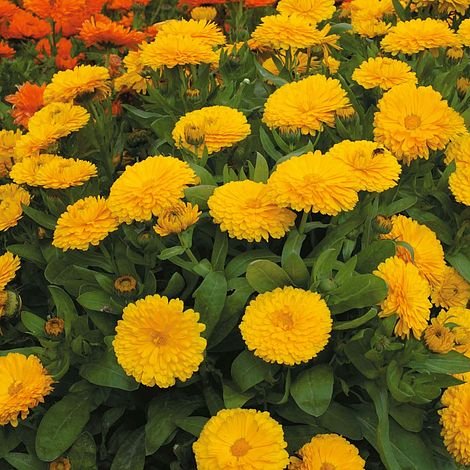The longest flowering and best double flowered pot marigold
Large, luminous blooms
The longest flowering and best double pot marigold that we have grown on our trial grounds! Sturdy, dwarf, multi-branching plants produce large, luminous blooms, to brighten summer borders and containers. The daisy-like flowers of Calendula 'Candyman Yellow' are excellent for cutting and can also be added to salads as an edible flower. Quick and easy to grow, calendula copes in almost any garden situation, and even grows well in coastal areas. Height: 25cm (10"). Spread: 30cm (12").
Culinary note: Some parts of these flowers are edible. The light peppery taste of the flowers can be added to breads for extra flavour with a touch of colour. Can also be used as a substitute for saffron when colouring rice dishes. For more details about edible flowers
Alternatively, sow indoors from March to April at a temperature of 18-23C (65-73F). When seedlings are large enough to handle, transplant and grow them on in cooler conditions until large enough to plant outdoors. For winter or early spring flowering, sow calendula in late summer or early autumn and grow plants on in a cool greenhouse or conservatory.

